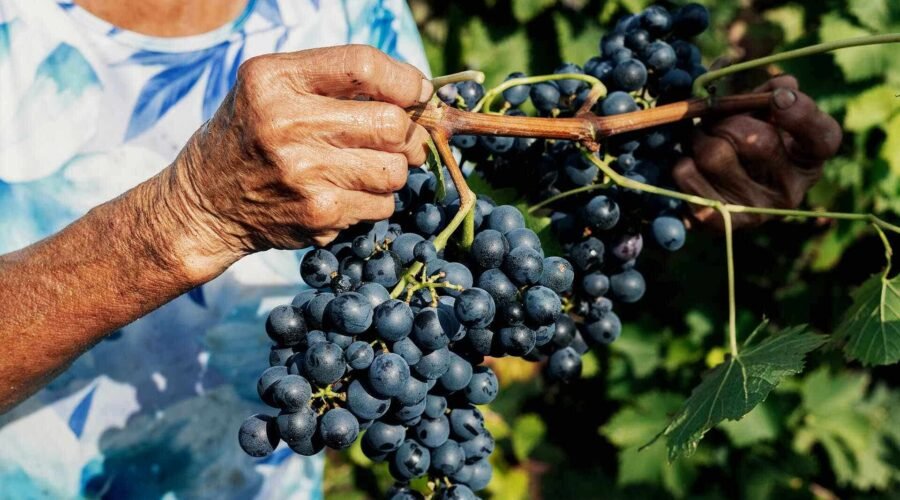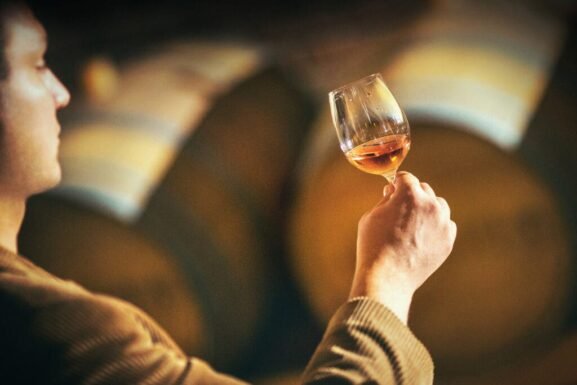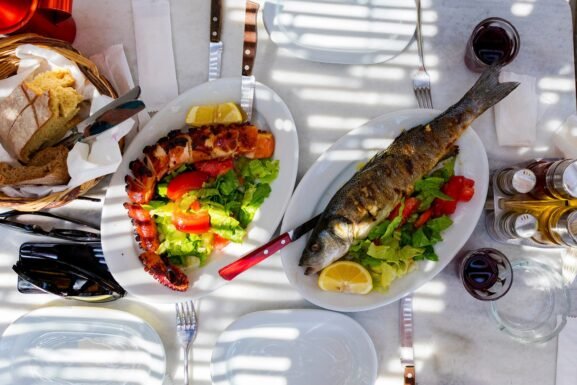Culture: “We Have to Act Now”: Winemakers Battle to Save Piedmont’s Iconic Barbera Amid Climate Change
The northwestern Italian region of Monferrato, located in Piedmont near the cities of Asti and Alessandria, is known for rolling hills dotted with medieval villages, castles and crisscrossed rows of vineyards. It’s home to several indigenous red grapes, including Freisa, Grignolino, Albarossa and Ruché. But even if you haven’t heard of Monferrato or the aforementioned grapes, you likely know of Barbera, the undisputed king of the region. This grape has long reigned supreme, but that could soon shift due to climate change.
Barbera, which is the most widely-planted grape in Piedmont, has grown here successfully for centuries, most notably under the Denominazione di Origine Controllata e Garantitas (DOCGs) Barbera d’Asti and Nizza. The region’s historically cool, sometimes rainy climate and the high temperature difference between day and night for generations created the perfect climate for these grapes. These fruits were then, of course, crafted into rich, fruity and fresh wines with high acidity and low velvety tannins, which have become known the world over.
But starting around the turn of the century, producers began to notice changes in the climate. There were more heatwaves in the summer and the winters became increasingly dry and snowless, according to Filippo Mobrici, president of the Consortium for the Protection of Barbera d’Asti and Monferrato Wines, an association of 400 producers in the region. Mobrici is also the CEO of producer Bersano, which owns about 570 acres of vineyards between Monferrato and the adjacent Langhe region, home of Barolo and Barbaresco.
“The climate has slowly but inexorably morphed into a warm, dry one,” says Mobrici.
The trend has been even more pronounced in the last two years, and isn’t just impacting Italy. A prolonged, devastating drought has affected much of Southern Europe, including Northern Italy, Southern France and Spain’s Catalonia. In his area, Mobrici received multiple reports of basal leaves drying, burns to grapes and plants suffering in other ways. The situation has gotten so dire that this past March, a group of farmers visited a local sanctuary in the Piedmont town of Casale Monferrato to pray for rainfall.
Sure enough, some rain did fall in late spring. But producers remain worried.
“Precipitation decreased across southern Europe, but around here, it all but disappeared,” says Cristiano Fornaro, vice-president of Vinchio-Vaglio, a winemaking co-operative, and owner of five acres of vineyard. “It just doesn’t rain anymore,” says Fornaro, speaking before the late spring rainfall. “We don’t remember the last time it rained.”
So far, there hasn’t been much of an impact on Barbera grapes. But, according to Mobrici, recent changes “alarm” the consortium. If the trend towards a hotter, drier climate continues, it risks packing more and more sugar into grapes in the future. That would lead to more alcoholic, less acidic or even imbalanced wines, forcing producers to look for fresher climates away from Monferrato.
“We want to keep Barbera here on these hills,” Mobrici says. “But to do that, we have to act now.”
It’s safe to say producers are taking action. From employing short-term fixes to researching and planning for the decades ahead, here’s how winemakers are working to preserve the legacy of Barbera.
Short-Term Fixes for a Long-Term Problem
Climate change can’t be fixed in a day, so in the meantime, wine pros are making do with quick fixes.
Bringing water to the Monferrato hills is a tall order. Few rivers or streams flow between them, and pumping water uphill would require costly engineering work. Barbera producers have traditionally relied on the region’s generous precipitation in the past, now no longer a reliable solution.
To help plants cope with the heat and water scarcity, many producers are reducing the amount of grass grown in the vineyard, according to Mobrici. After all, if water is scarce, producers want to ensure it all goes to the vines.
Another concern? The heat. “Vineyards can’t turn on the AC, so we must prevent heat stress in other ways,” says Mobrici. During pruning, winemakers leave more leaves around the bunches to shade them. They do the same at the top of the plant.
Meanwhile, at harvest time, Mobrici says that warmer temperatures and drier conditions have accelerated grape maturation. To prevent sugars from accumulating in the grapes, producers now tend to harvest in the first 10 days of September—about two weeks earlier than previous years.
Looking Down the Road
Should drought and heat intensify, these short-term fixes might cease to help producers. “In the end, nature always wins,” says Fornaro. “There’s not much we can do to irrigate vineyards if nature doesn’t give us the water.”
That’s why the Consortium for the Protection of Barbera d’Asti and Monferrato Wines is spearheading a longer-term genetic project to find the most resilient Barbera vines that could withstand and even thrive under the changing climate.
“We want to look for solutions in the genes of our oldest vines,” says Fabio Teodo, who leads the project for the consortium. Known as Ageba, the effort kicked off in January of 2023. Other partners include research center Crea-Ve, the Catholic University of Piacenza and 10 producers in the region, including Bersano wines, led by Mobrici and Fornaro. “In our centuries-old vines, we are likely to find answers for future challenges,” says Teodo.
Indeed, to plan for the future, researchers need to look to the past. The present has its own problems: In modern agriculture, plants are often identical genetic clones of one another. Cloning has revolutionized and helped agriculture in the last few decades, enabling farmers to recreate the desired characteristics of a parent plant. But it has also shrunk the gene pool of the species—while these vines all have the same strengths, they also have the same weakness, which include the same reactions to emerging threats such as water scarcity or heat.
However, according to Teodo, this is not true of vines dating back to the 1950s and 1960s in Monferrato, which were planted by grafts from different individuals. As a result, a greater variety of clones was created. They differed slightly from each other and have different tolerance to heat and water scarcity.
“We see that sometimes vines planted in the 1950s and 1960s are more resistant to drought and pathogens,” says Teodo. “But our evidence was always anecdotal. Now we want to find out scientifically why that is so.”
Over the next few years, the Ageba project will select 100 vines that appear particularly resistant to drought, heat and pathogens, often picking them from the driest parts of Monferrato. Then scientists will screen the vines and reproduce them in a test field. From there, the consortium will study the grapes produced over a few vintages, looking for higher acidity and lower sugars, among other characteristics. If a specific plant consistently bears better fruit, the consortium will share it with producers to plant in the future vineyards in Monferrato.
It’s too early to tell if the project will protect these wines from a changing climate. After all, Ageba is still screening old vines, looking for candidates for the test field. It will take years, perhaps decades, to find solutions—if it ever does.
Meanwhile, the region was recently treated to a miraculous reprieve: The start of the summer brought rains to Asti and the Monferrato, saving the 2023 vintage. But scientists say summer 2023 will remain hot and dry, serving as an omen for the years to come.
Yet, Mobrici remains optimistic. “Just like producers found a way to solve the problem posed by phylloxera a hundred years ago,” he says, “we, too—with more technology and knowledge—will find a way.”
Last Updated: July 11, 2023


